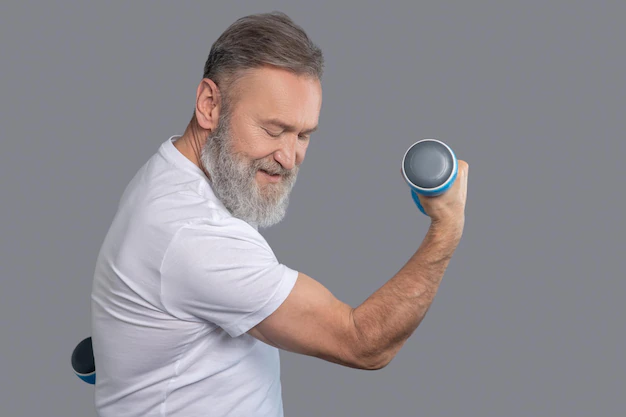Age-Related Muscle Loss

Age-related muscle loss, also known as sarcopenia, is a natural process that occurs as people get older. It is characterized by a gradual decline in muscle mass, strength, and function, and it can lead to a variety of negative health outcomes, including increased risk of falls, disability, and decreased quality of life.
The causes of age-related muscle loss are not fully understood, but some contributing factors may include:
- Reduced physical activity: As people age, they tend to become less active, which can lead to muscle loss.
- Changes in hormones: Hormonal changes that occur with age, such as a decrease in testosterone and growth hormone, may contribute to muscle loss.
- Poor nutrition: Inadequate intake of protein and other nutrients essential for muscle growth and maintenance can contribute to muscle loss.
- Chronic inflammation: Chronic inflammation, which can occur as a result of aging and other health conditions, can contribute to muscle loss.
Symptoms of age-related muscle loss may include weakness, fatigue, decreased endurance, and difficulty with daily activities such as climbing stairs or carrying groceries.
Prevention and treatment of age-related muscle loss may include:
- Regular exercise: Resistance training, such as weightlifting, has been shown to be effective in maintaining and increasing muscle mass and strength in older adults.
- Adequate nutrition: Eating a diet that is rich in protein and other essential nutrients can help support muscle growth and maintenance.
- Hormone replacement therapy: In some cases, hormone replacement therapy may be recommended to address hormonal imbalances that contribute to muscle loss.
- Managing chronic health conditions: Treating and managing chronic health conditions such as diabetes, arthritis, and heart disease may help prevent or slow down age-related muscle loss.
In conclusion, age-related muscle loss is a common condition that affects many older adults. However, there are steps that can be taken to prevent or slow down muscle loss, including regular exercise, adequate nutrition, and hormone replacement therapy if necessary.
